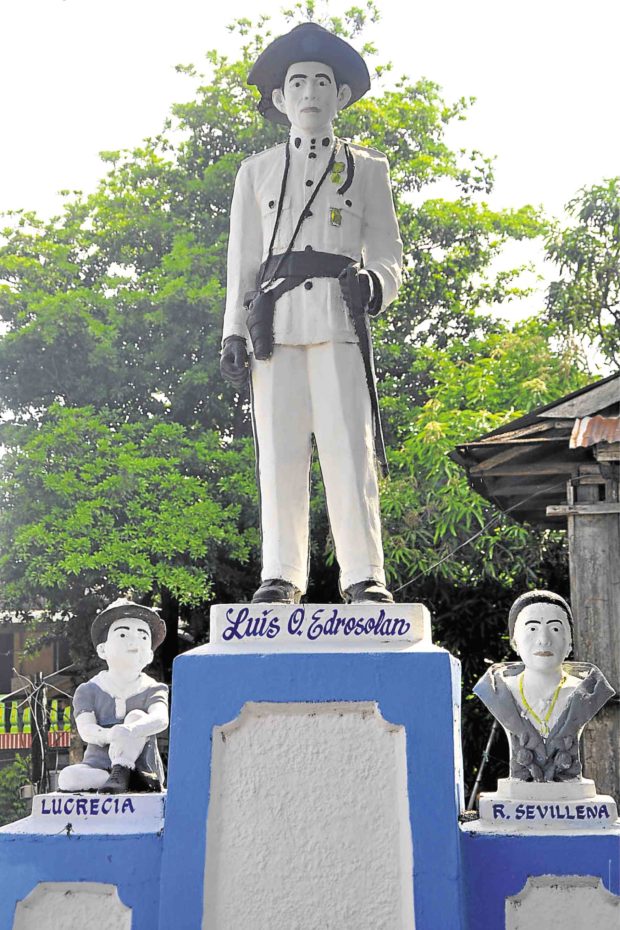
HOMETOWN HERO A monument standing on a family property in Sual town in Pangasinan province is the only reminder of Luis Edrosolan’s heroism during the revolution against Spain and World War II. —WILLIE LOMIBAO
SUAL, PANGASINAN—Anyone passing through this town will not miss the monument in the front yard of an old house along the highway in Barangay Paitan West.
The statue of a man, dressed in a Katipunero uniform, often leaves travelers wondering who he was and why a monument was built for him.
“He’s my grandfather, Luis Edrosolan,” said Jose Edrosolan, who retired four years ago from the Bureau of Customs. “A woman’s bust to his left is his wife, Rosita, and the one on the other side is his daughter, Lucrecia,” Jose said.
Luis’ godson, an artist, had volunteered to build the monument in 1944, as a tribute to the former Katipunero for the help he gave to Paitan West, which was then part of Barangay Camagsingalan.
On Jan. 8, 1945, Luis was beheaded by retreating Japanese Imperial Army soldiers, as the Allied Forces led by Gen. Douglas MacArthur prepared to land on the beaches of Lingayen Gulf.
Jose said the Japanese soldiers arrested Luis in 1944 after he was found to have supplied food to Filipino guerrillas operating in western Pangasinan.
“Luis Edrosolan was well-to-do and he had furnished our forces [with] rice, cattle, hogs and chickens,” said Col. Antonio Garcia, commanding officer of western Pangasinan guerrillas, in a 1950 affidavit.
A son of migrants from Magsingal town in Ilocos Sur province, Luis was born in 1873 and grew up in this farming and fishing town. He acquired farm lands, often closing a transaction by paying horses or cattle.
He had one child, Lucrecia, who was born out of wedlock. It was his nephew, Macario, who served as his trusted aide. Macario later became a court-appointed administrator of Luis’ properties.
Lucrecia, who is now in her 80s, has been living in the United States, according to Jose.
Jose said older residents in the village often told him stories about Luis’ involvement in the revolt against Spain.
This may be the reason Luis was dressed in a Katipunero uniform in the monument, he said. Unfortunately, he added, there are no documents that would prove this.
But Luis may have been among the nameless members of the local forces when revolutionary activities against Spain began in Pangasinan in 1897, he said.
Despite his grandfather’s heroism during the two wars, Jose said Luis had not been formally recognized.
After World War II, town officials here wanted his monument to be transferred to the town hall compound for him to be honored as a hero and for the town government to prepare ceremonies every year to remember him, Jose said.
“But for reasons I could not remember now, it did not materialize. Succeeding mayors also attempted to do something about it but it did not also work,” he said.
He would discover later that in his will, Luis decreed that his monument should stay where it is today.
Every Jan. 8 since 2010, the Edrosolan clan would gather around the monument to remember Luis and celebrate his heroism.